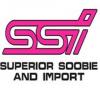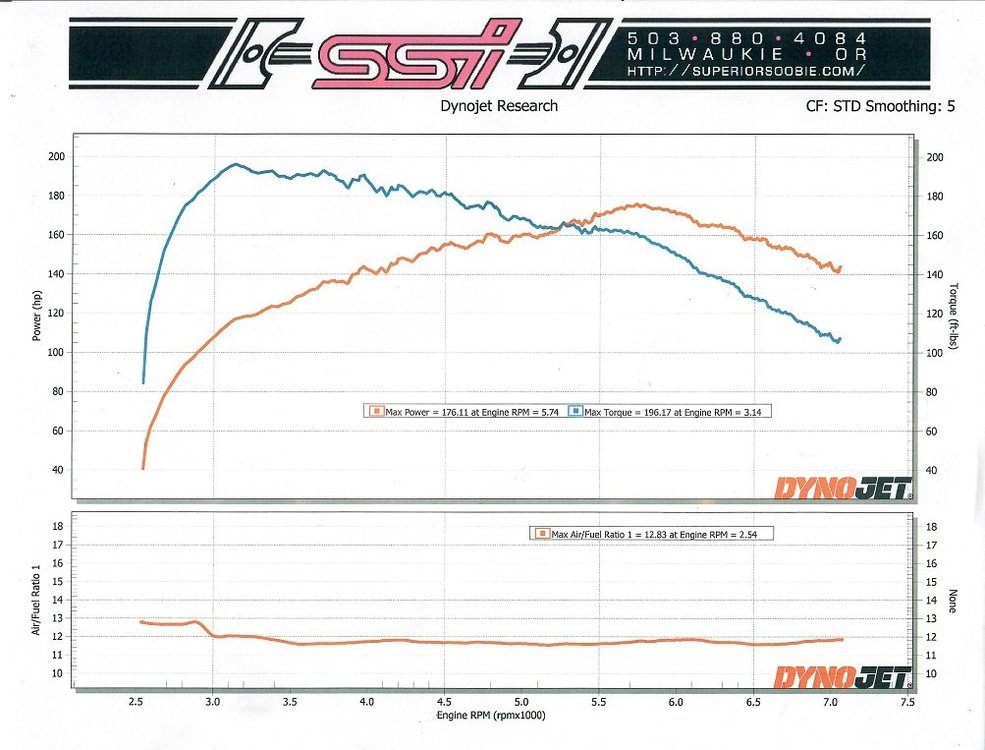Leaderboard
Popular Content
Showing content with the highest reputation on 11/14/19 in all areas
-
Cheap knock sensors are a REALLY bad idea. Just because the sensor meets the ECU's expectations of circuit resistance says NOTHING about it's ability to accurately profile the noise from the engine and trigger the ECU's knock detection threshold correctly. The sensor is a piezoelectric microphone and buying the cheap ebay ones is the equivalent of buying dollar store earbuds and trying to listen to high definition audio. The accuracy of the sensor depends on MUCH more than the resistance of the circuit used by the ECU to determine if it's failed or not. They are also "tuned" to listen to specific kilohertz frequency ranges. Anything from about 2Khz to 17Khz can be found on different engines and the determining factor on knock sensor frequency is largely the bore and stroke of the engine. So for reasons of accurate knock detection it is a bad idea to give the ECU a different model of sensor other than what it was designed to listen to. GD1 point
-
I will say that a proper explanation from Shawn would be a lot more helpful than deleting the previous thread. Why can't we all just work this out and help both parties to a mutually beneficial solution? I've got a lot of use from this forum and I thank Shawn for maintaining it for us. I would chip in for shipping to get this transmission to his customer if that's what needs to happen. I don't see this being that difficult to resolve and I don't see how ignoring it or deleting it will help either. GD1 point
-
3.6 will make a lot more power but you will have to use like a LINK to run it. No way the factory ECU is going to be happy in a swap. Certainly can be done though. GD1 point
-
1 point
-
I cannot believe what this was! The screw that held/holds the ignition switch into the key lock assembly was gone. SO...when the key was turned to start, the switch moved in the casing just enough that no contact was made. One screw and fixed. Man...that was easy! But now I know what to do if problems occur in the future! Thanks Guys! Todd1 point
-
Could be a number of things. But one easy one is to check is that the wheel lug-nuts are tight...1 point
-
Can't really find a TA with 250 for what that 96 Legacy is worth. The 3rd gens are rising in value....... LS 4th gens are way out of that price range..... might get an LT1 mid 90's rust bucket for a similar price. No one really wants those at the moment. GD1 point
-
the 4 primary things that will throw that code seem to be; a:f ratio off , exhaust leaks , bad rear O2 signal , bad cat. conv. I know some of those are very general, but start with confirming them if possible. The temp out the back of the converter should be about 100*F more than the temp going in.1 point
-
The 2.2 heads probably make even more torque due to their small intake ports. I doubt they develop the same HP as the high compression 25D. Probably less than a factory 25D honestly. It just feels like a lot because of all the torque and it's probably 20 HP over the 2.2 anyway given the increase in displacement. If I had to guess I would put the 2.5/2.2 hybrid at around 155 crank HP..... might be 180 ft/lbs though. GD1 point
-
Hard to believe that something diluted in your gas tank and then passing through the engine burn chamber will have much cleaning oomph by the time it makes it to the cat. If your 05 Imp is like my 05 Outback, there are three cats and 5 sensors. That's a lot of hardware to replace. I live in CT requiring OBD-II emissions testing. I've always been curious what an old school tailpipe sniffer would actually disclose about emissions when P0420 shows up. As you, my understanding of "catalytic efficiency Bank 1 below threshold" can result from many issues. Also, what is that actual "below" threshold and are these cars tuned so tightly for federal regulations that the slightest "below" triggers the code without actually melting the polar ice caps? There doesn't appear to be any performance issues with my 05 Outback and I have had the code recurring for the past 100K miles starting first around 105K miles. Car had TB and plugs changed 5K before the code first arose. I first changed Bank 1 (passenger) front (pre-cat) O2 sensor. No change. Then Bank 1 rear sensor. No change. Then the passenger front converter. This then resulted in Bank 2 below threshold code. Every 2 years, for inspection, I cleared the code and allowed system readiness then hurried to the local testing station to buy another 2 years of "pass". As years have passed and the car aged, the cost effectiveness of deep diving into chasing the code has tipped to the negative. I recently experimented with installing a resistor spliced into the post cat signal wire (I think 1 mega ohm). I no longer get the P0420 but now I get a P2098 and am not sure if it is related to my Frankenstein electrical trickery. Google "P0420 resistor capacitor" if you just want to experiment with turning off the CEL light show and re-enable cruise control. There you'll find a YouTube video of another method using a capacitor and resistor, that I may yet try. Note that the sensor wires are stainless steel so soldering is not easy and in my case, I resorted to simply twisting the wires and covering with heat shrink tubing.1 point
-
We have been working on this for a bit now, and have several units in the field along with a growing library of base maps for running the OBD-I harness EJ engines (turbo and non) on a plug-and-play LINK ECU. With minor changes to a few pins, and running a vacuum line to the ECU you can be up and running with no codes and modern full programmable stand-alone features in a matter of minutes. LINK developed this board for the V1-2 WRX/STI over in Europe, Australia, and Japan. It happens to share the same basic pinout as the USDM EJ22 and EJ22T cars (Legacy 90-94, and Legacy Sport 91-94). The LINK supports full motorsports features such as: G4+ PlugIn Key Features Up to 6D fuel and ignition mapping Precision closed loop cam control (four cam, independent control) Sequential fuel delivery Digital triggering, all OEM patterns OEM idle hardware supported 5D boost control with three switchable tables Motorsport features - antilag, launch, flat shift Continuous barometric correction (on board) CAN port QuickTune - automated fuel tuning Individual cylinder correction USB tuning cable included Stats recording into on-board memory Gear compensations for spark, boost and fuel Real time selectable dual fuel, ignition and boost maps Sync and crank sensors can be a combination of Hall effect, variable reluctance or optical Boost control referenced to gear, speed or throttle position Up to 32Mbit internal logging memory Staged injection Knock with "windowing" This is the ECU we use for this application: http://dealers.linkecu.com/WRX2Plus Our kits also include a 3-bar map sensor, and the expansion loom for adding inputs such as wideband O2 (highly recommended), fuel pressure, EGT, or any other input you would like to map to an ECU function, alarm output, etc. Included in our package is our dyno derived base map library for the EJ, as well as technical support, and 1 hour of remote tuning assistance to get you up and running and driveable to your local dyno shop or on the street tuning either professionally or personally. The tuning software is completely free and there are no licensing or other fees associated with the software. EVER! You can freely download the latest version from the LINK website anytime even if you don't own a LINK ECU. The software is very user friendly and has amazing documentation - right clicking on just about anything brings up a help window. Tired of those expensive MAF sensors? Throw it away forever. LINK can run speed density, or use any MAF from thousands of other newer vehicles - frequency MAF from an LS? No problem. Throttle body not large enough? Bad TPS? No problem - adapt a newer model. You can change any sensor to anything you like from any make and model supported in the software. Just pull from your choice of car in the junk yard and change a few ECU settings. NO LIMITATIONS. Tired of the limitations of the OBD-I factory ECU? The LINK ECU package with included MAP sensor, XS Loom, basemaps, and remote tuning assistance are $1499 Here's a Dyno sheet from our shop's 1991 Legacy Sport Sedan. This car is 100% stock with only 3" turbo-back exhaust. Factory rated at 165 crank HP on 8 psi. This is @ 16 psi with a LINK ECU, and redline bumped up to 7200: 176.11 AWHP, and 196.17 AWTQ. Corrected for drivetrain losses that's about 210 crank HP from the stock EJ22T with only exhaust mods. Please feel free to contact me either here, or through Facebook or email for any questions, etc. GD1 point
-
My first Subaru was an XT6. Regardless I always wanted another one. I’ve had recurring dreams about the freaking car for 20 years now. I’ve been busy with work and I’m gonna try to Putz with it this weekend.1 point






